Our Semester Abroad 2022
Tuesday, August 16, 2022
After our usual breakfasts in the hotel, we strolled up the street to Canterbury Cathedral (https://en.wikipedia.org/wiki/Canterbury_Cathedral). The main gate from the street is being refurbished. We went through the gift shop - a Discovery Day area where little kids were learning about restoration with wood mallets roughing out building stones. Upon entering the precincts, the grounds surrounding the Cathedral, it was if the Cathedral just rose from the ground in front of us. To the left were Gregorian houses built in the seventeenth and eighteenth centuries that are still used today as lodgings and offices. Many of them had English gardens in front (Photo 3 - 1). At the end of the street is the Archbishop’s Canterbury residence, the Old Palace (Photo 3 - 2).
Sarah White
18 chapters
2 Jul 2022
Chapter 3 - Canterbury Cathedral and Churchill's Chartwell House
August 21, 2022
|
Canterbury and Westerham U.K.
Tuesday, August 16, 2022
After our usual breakfasts in the hotel, we strolled up the street to Canterbury Cathedral (https://en.wikipedia.org/wiki/Canterbury_Cathedral). The main gate from the street is being refurbished. We went through the gift shop - a Discovery Day area where little kids were learning about restoration with wood mallets roughing out building stones. Upon entering the precincts, the grounds surrounding the Cathedral, it was if the Cathedral just rose from the ground in front of us. To the left were Gregorian houses built in the seventeenth and eighteenth centuries that are still used today as lodgings and offices. Many of them had English gardens in front (Photo 3 - 1). At the end of the street is the Archbishop’s Canterbury residence, the Old Palace (Photo 3 - 2).
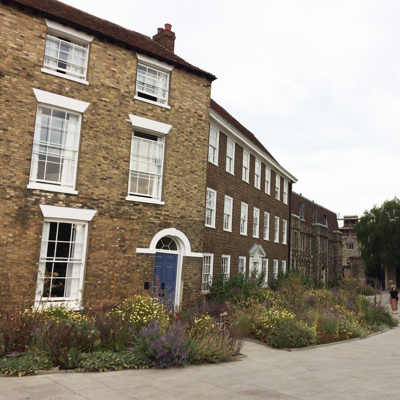
The Cathedral is being cleaned from top to bottom, hence the scaffolding on the towers (Photo 3 - 3). Like many medieval cathedrals, statues of historical figures line the entrance walls (https://statues.vanderkrogt.net/object.php?webpage=ST&record=gbse066). Queen Elizabeth and Prince Philip were added in 2015 (Photo 3 - 4). By the way, Bruce asked an elderly docent, “Whose statues did Elizabeth and Philip replace?” She answered: “The niches were vacant.” As we learned later, she was wrong. Bruce found out. Can you guess which historical figures were removed to make way for the moderns?
We got photos of the west entry (the Archbishop’s entrance) stained glass windows from outside and in (Photo 3 - 5). The Cathedral is vast inside (Photo 3 - 6). All walls were lined with burial sites or memorial plaques. The lectern was very ornate (Photo 3 - 7). To the left of the high alter was the site of

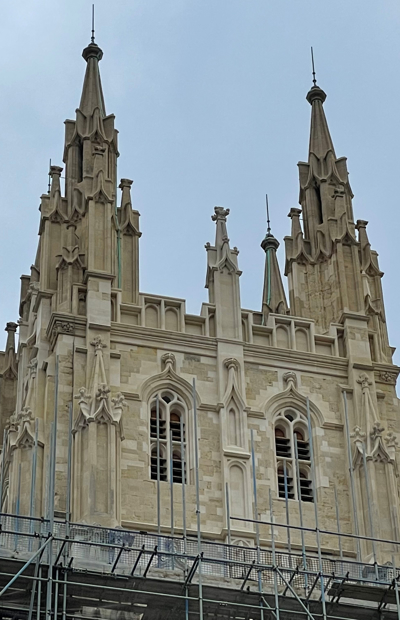
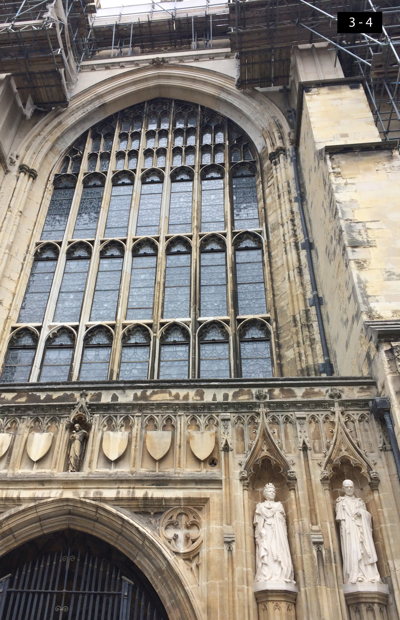
Thomas Becket’s murder at the hands four knights of King Henry II. Under the high alter is the crypt. Becket’s bones laid here for several centuries until they were scattered upon the orders of Henry VIII when the monasteries were dissolved in the late 1530s.
We had lunch at Tiny Tim’s Tearoom (https://www.tinytimstearoom.com); two small plates: fish cakes with creamed spinach on top and mixed mushrooms with taleggio. In the afternoon, Sarah walked along the medieval wall and viewed some gardens. Bruce wrote in the journal and took a nap.
We had dinner at Pinocchio’s (https://www.pinocchioscanterbury.com): Sarah had the closest item possible to Chianti’s Pasta alla Norma and tiramisu and Bruce had candy-shaped pasta filled with prawns and asparagus (Photo 3 - 8).
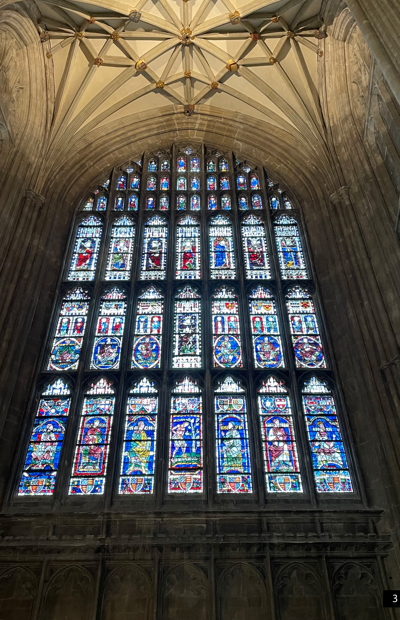
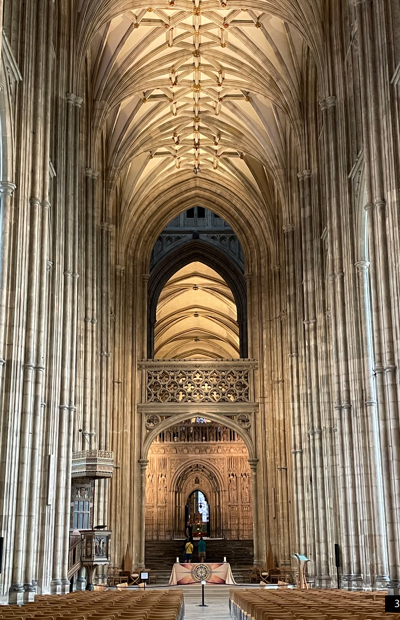

Wednesday, August 17, 2022
We had a late breakfast at the hotel. We returned to the Vodaphone store (fourth time)! Sarah was having trouble with local calls and Bruce learned that the SIM card he bought in Portsmouth was intended to be sold in Germany (all the apps available on the phone’s App Store were intended for English-speakers traveling there). The Vodaphone agent told Bruce to go the local Apple retailer to see if they could fix the problem (sound familiar?). Bruce's bet is that in the end he will need a new SIM card. We stopped at Sainsbury’s market on the way to the Canterbury West railway station and bought some cheese and Pringles for our trip to Churchill's Chartwell House.
At the train station, we learned that a fire in London delayed our train to Sevenoaks. At the last minute, the normal schedule resumed, and we were off to the closest train station to Churchill’s country house in Westerham, Chartwell House (https://www.nationaltrust.org.uk/chartwell). The trip was about 2 hours. At Sevenoaks we caught a taxi (£24 each way for the 7-mile, 20-minute ride). Sevenoaks and Westerham
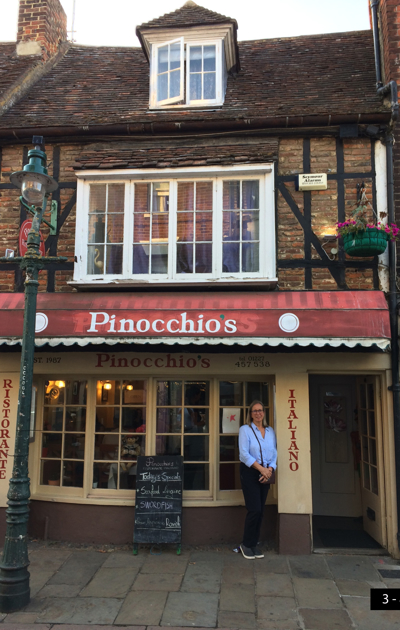
were charming cities (nice small towns to visit for a week to take in the culture - about an hour from London by train).
The setting for Chartwell House was bucolic. (Photos 3 - 9 and 3 - 10). The house is iconic especially if you've seen the movies "The Darkest Hour" or "The Gathering Storm". (Photos 3 - 11 and 3 - 12) The house tour route can be found at: http://www.lisaholdcroft.com/maps.html.
We both agreed on our one favorite historical piece - a painting of his wife, Clementine (https://www.countrylife.co.uk/luxury/art-and-antiques/favourite-painting-rupert-soames-grandson-winston-churchill-189434). Churchill used a photograph of his wife taken at the christening of HMS Indefatigable in 1943. Very lovely artwork
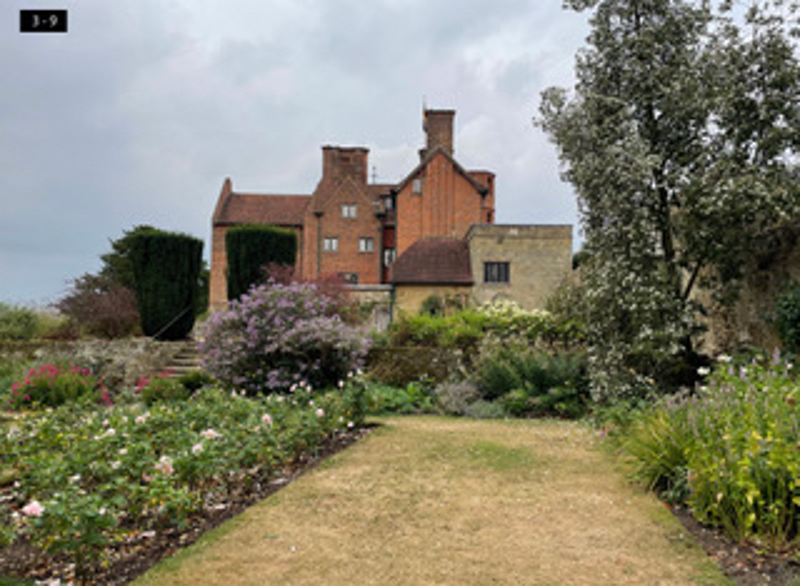
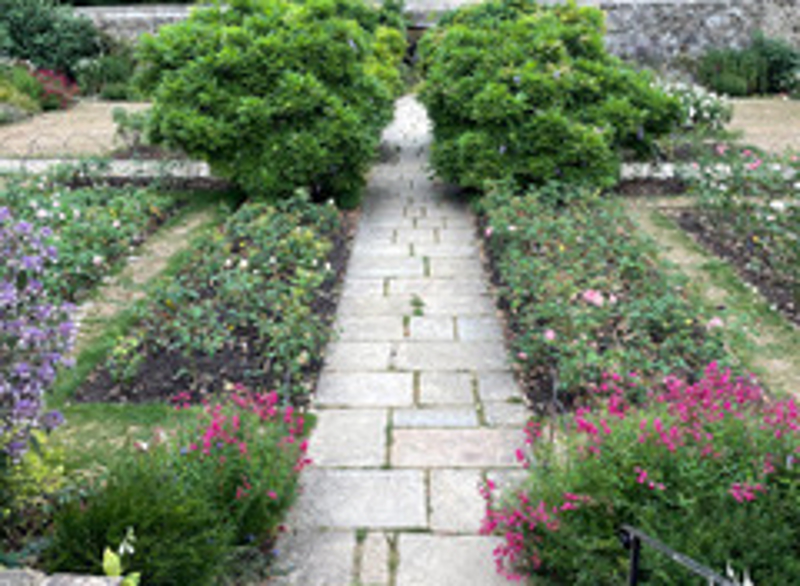
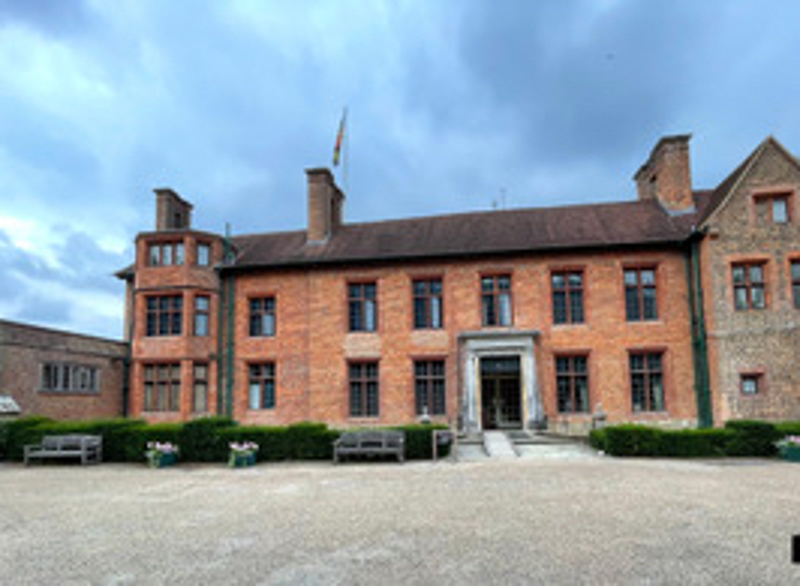
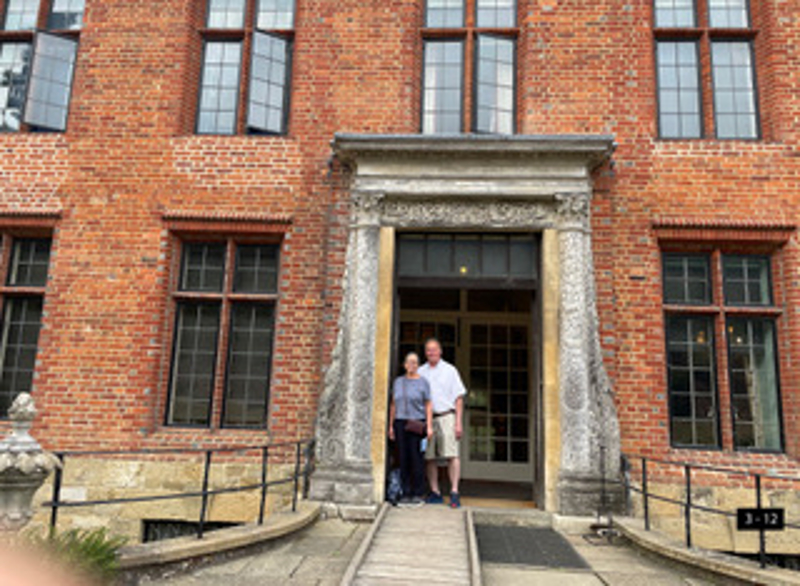
by an artist who favored impressionism and great vistas. Other interesting exhibits included his many uniforms and communications from President Franklin D. Roosevelt and President John F. Kennedy. His honorary U.S. Citizenship documents were also displayed (Photo 3 - 13). The Order of the Garter, which is the highest order of chivalry bestowed by the sovereign, was included in the exhibits (Photo 3 - 14). It laid on his coffin at his death.
Two rooms inside the house were of special interest - the secretaries' room (Photo 3 - 15) and Churchill's office (Photo 3 - 16). All of the interior rooms were refurbished after his death at the direction of Lady Clementine Churchill to look exactly like it originally looked when they lived there. But she never lived there again.
The National Trust – the charity that maintains the site – has an exhibit just before visitors exit the house. It was a highlight: “A History of Winston Churchill’s in 50 Objects.” (https://www.kentonline.co.uk/whats-on/news/the-many-sides-of-churchill-revealed-196578/).
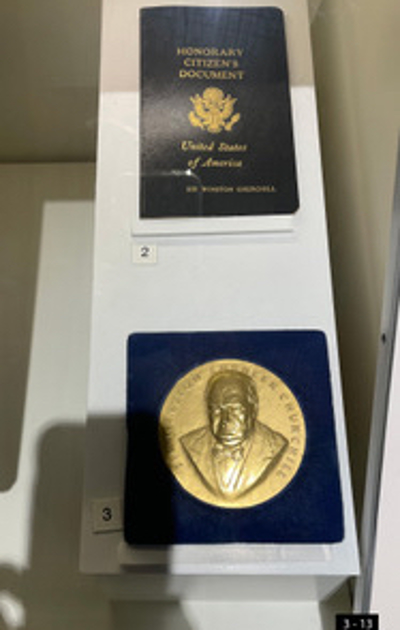
Also on the grounds is his studio where he painted (Photo 3 - 17). The grounds were beautiful: flower gardens, kitchen gardens, orchards, ponds, many surrounded by brick walls that Churchill maintained professionally himself (https://winstonchurchill.org/publications/finest-hour/finest-hour-157/churchill-as-bricklayer/). (Photo 3 - 18) It was cloudy all day and rained a bit on the walk out toward the exit.
We had a late lunch at the Visitor’s Center. (We’re glad we bought the cheese earlier; it enhanced the meal of tomato-basil soup and sweet corn chowder.) The return train got us back to Canterbury by 7 PM. We returned to Cote Brassiere for small plates for dinner.
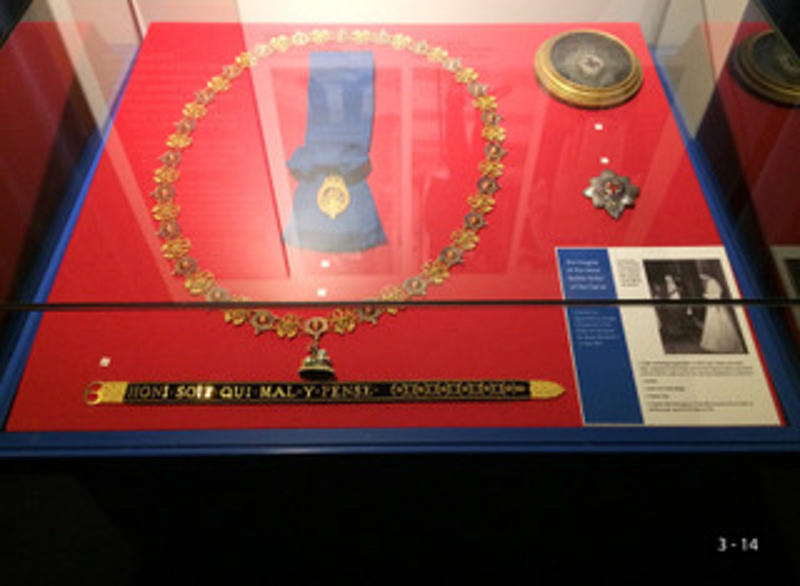
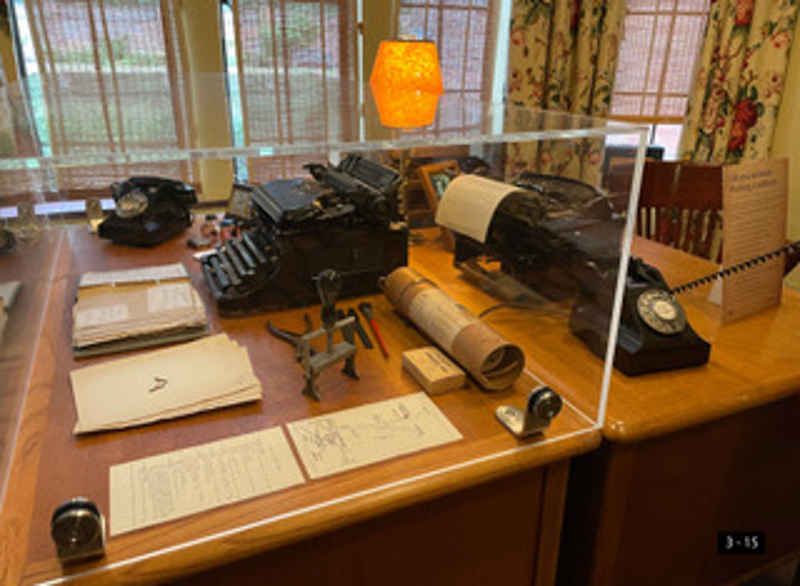
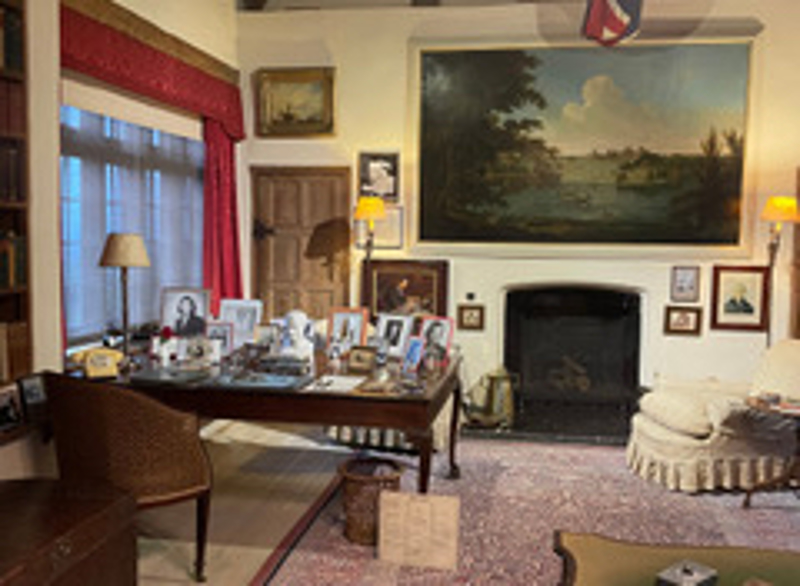
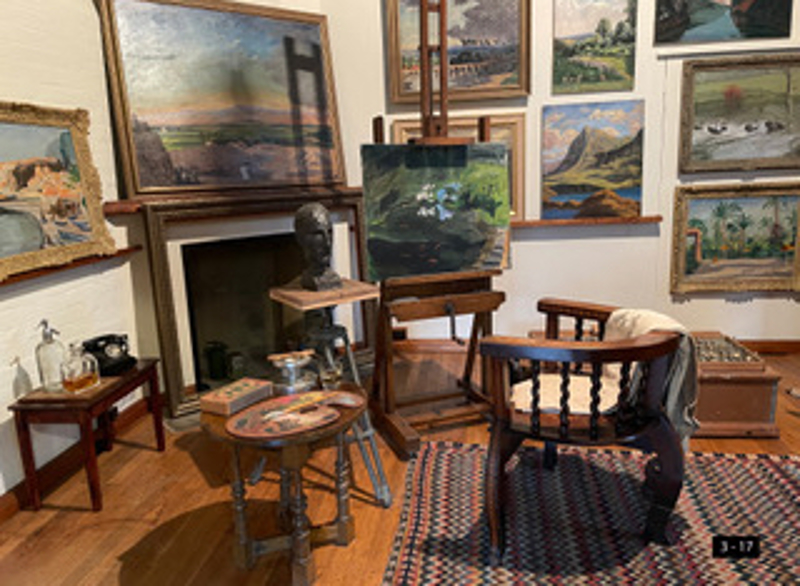
Thursday, August 18, 2022
On the seventh day we rested. In the morning, Sarah went for a massage and Bruce caught up on the journal entries. Sarah keeps reminding Bruce that the travel journey is not an academic paper that will be graded.
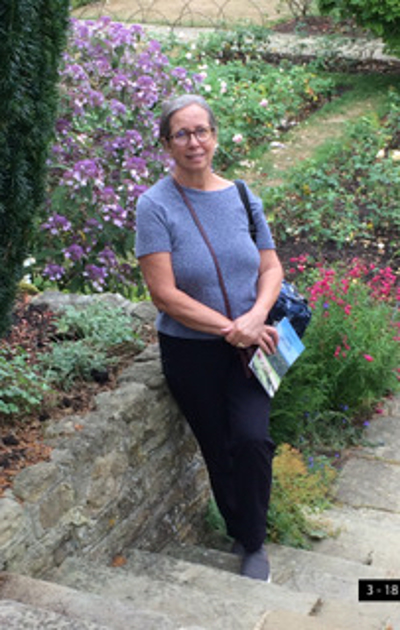
1.
Chapter 1 - The Joys of Travel
2.
Chapter 2 - London and Canterbury
3.
Chapter 3 - Canterbury Cathedral and Churchill's Chartwell House
4.
Chapter 4 - Dover, Canterbury Town Center and Whitstable
5.
Chapter 5 - Edinburgh and the Royal Military Tattoo
6.
Chapter 6 - Glasgow and Andy
7.
Chapter 7 - Aberdeen Part I
8.
Chapter 8 - Aberdeen Part II
9.
Chapter 9 - Inverness Part I
10.
Chapter 10 - Inverness Part II and Andy
11.
Chapter 11 - Fort William and Day One on the Isle of Skye with Andy
12.
Chapter 12 - Isle of Skye and our last days with Andy
13.
Chapter 13 - Edinburgh Part I
14.
Chapter 14 - Edinburgh Part II
15.
Chapter 15 - Edinburgh Part III
16.
Chapter 16 - London Part I
17.
Chapter 17 - London Part II
18.
Chapter 18 - London Part III
Share your travel adventures like this!
Create your own travel blog in one step
Share with friends and family to follow your journey
Easy set up, no technical knowledge needed and unlimited storage!